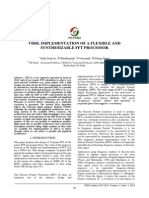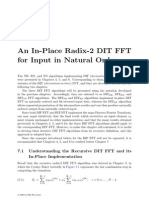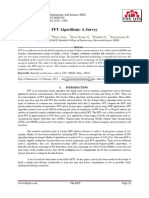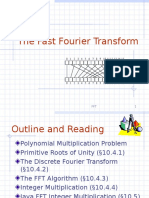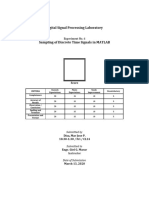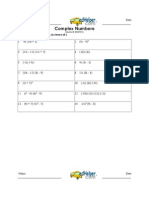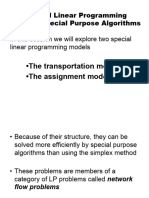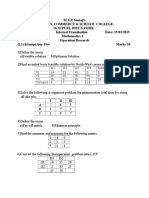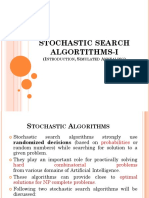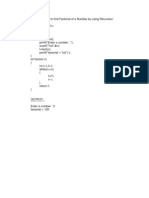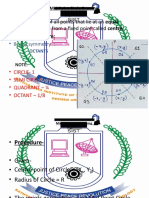0% found this document useful (0 votes)
15 views6 pagesEfficient FFT Implementations
This document discusses efficient implementations of the Fast Fourier Transform (FFT), focusing on both iterative and parallel approaches. It explains the iterative FFT algorithm, which operates in O(n log n) time, and introduces the concept of butterfly operations for combining elements. Additionally, it describes a parallel FFT circuit that leverages the iterative algorithm's structure to perform computations concurrently, achieving a depth of O(log n).
Uploaded by
kunalrastogi13Copyright
© © All Rights Reserved
We take content rights seriously. If you suspect this is your content, claim it here.
Available Formats
Download as PDF, TXT or read online on Scribd
0% found this document useful (0 votes)
15 views6 pagesEfficient FFT Implementations
This document discusses efficient implementations of the Fast Fourier Transform (FFT), focusing on both iterative and parallel approaches. It explains the iterative FFT algorithm, which operates in O(n log n) time, and introduces the concept of butterfly operations for combining elements. Additionally, it describes a parallel FFT circuit that leverages the iterative algorithm's structure to perform computations concurrently, achieving a depth of O(log n).
Uploaded by
kunalrastogi13Copyright
© © All Rights Reserved
We take content rights seriously. If you suspect this is your content, claim it here.
Available Formats
Download as PDF, TXT or read online on Scribd
/ 6


















